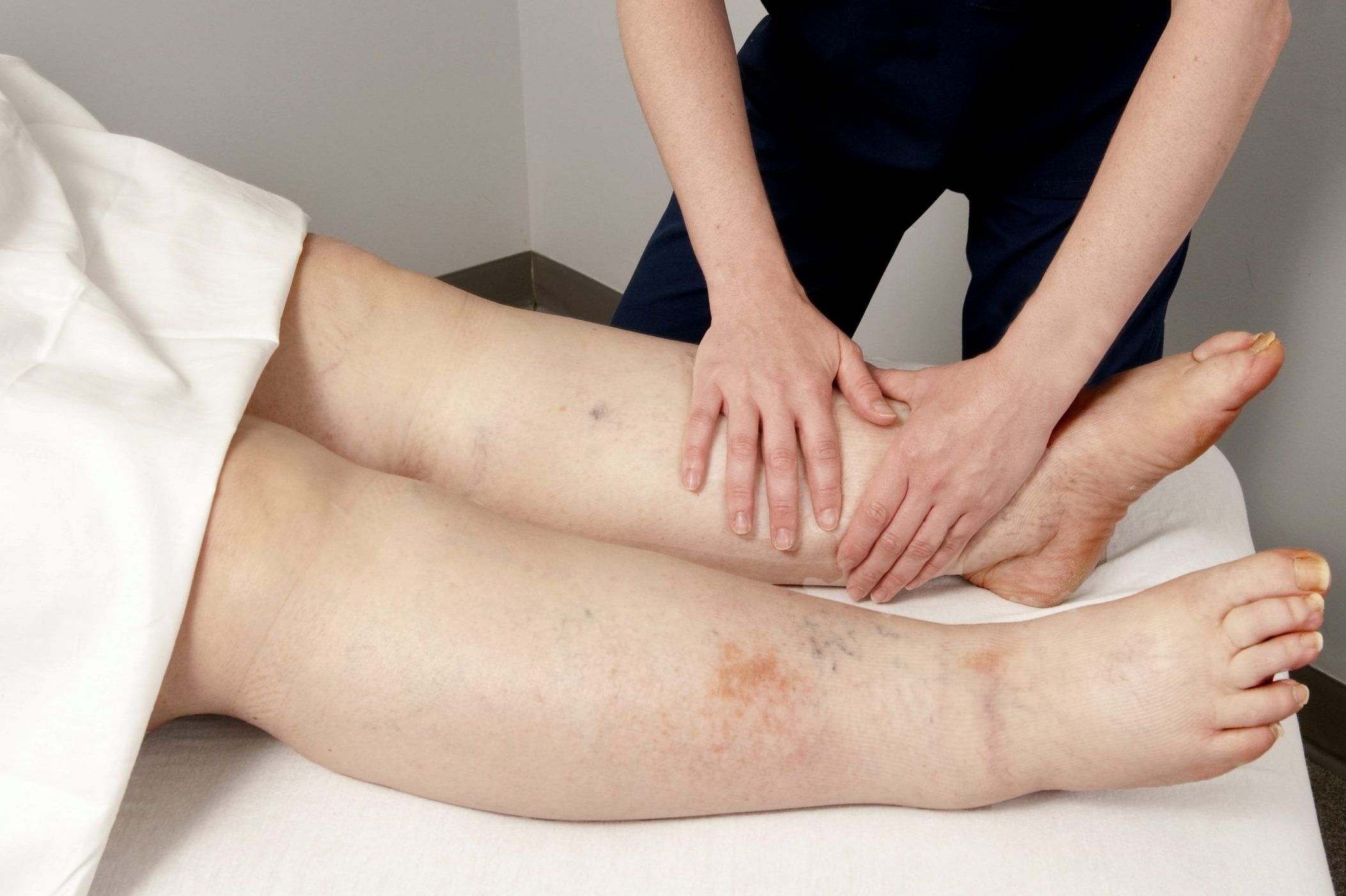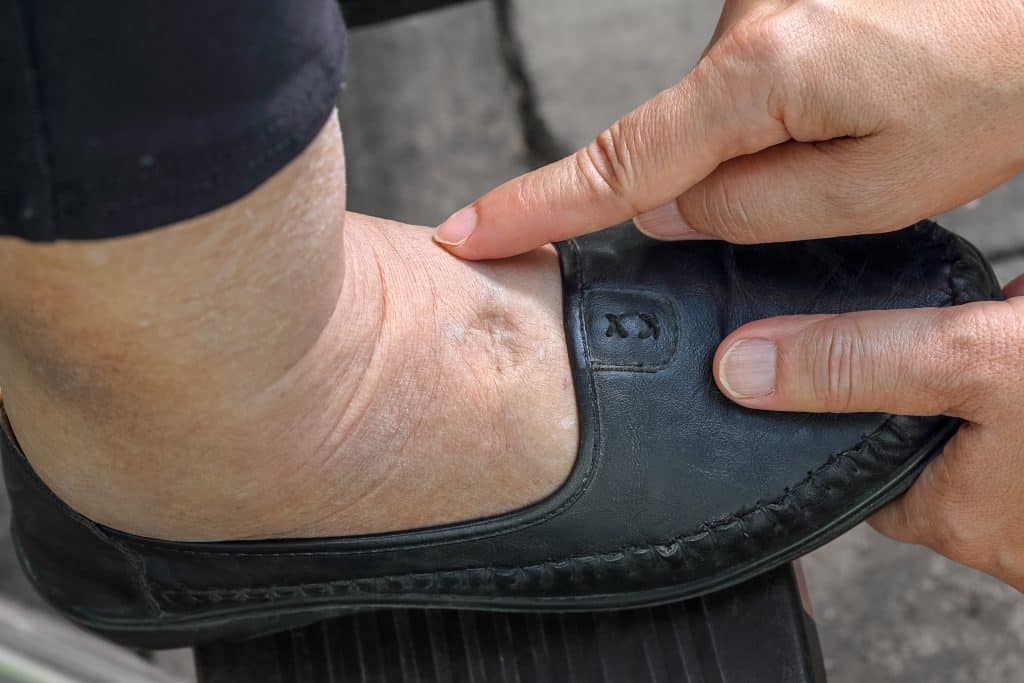Leg Swelling – Causes & Treatment – Auckland NZ
Leg swelling (oedema) is fluid retention within the tissue of your leg and may be experienced as ankle swelling or swelling in the lower leg or foot. Your skin may look shiny or you may notice indentations remain in your leg when you remove your socks.
Leg swelling can be caused by varicose veins as well as multiple other underlying causes such as liver, kidney or heart failure. If not addressed, leg swelling can cause pain, stiffness, itchiness, skin infection, scarring and impaired walking.
Below we discuss leg swelling causes and how we diagnose these at Palm Clinic, as well as our leg swelling treatment options.

What Causes Leg Swelling
Leg swelling happens when blood vessels leak fluid into the tissues of the leg. The lower leg, ankle or foot then accumulates the excess fluid as a result of gravity, causing them to swell. There are many underlying causes as to why fluid may be leaking into the leg, including:
- Venous insufficiency: This is a condition where the veins in the leg fail, causing them to direct blood flow down into the lower leg rather than up towards the heart as a healthy vein would. The result is that blood collects in the veins causing them to become varicose veins, and causing fluid to leach out into the tissues, which is experienced as leg swelling.
- Issues with deep veins in the legs: Issues such as deep vein thrombosis (DVT), which is a blood clot in the leg, can also obstruct blood flow up the leg towards the heart, again causing blood to pool and fluid to leach out into the tissues.
- Prolonged immobility: Sitting, standing, or lying down for long periods of time such as on a flight or in a hospital bed.
- Heart failure: When the heart is impaired and doesn’t pump properly, the drainage of the legs suffers leading to leg swelling.
- Liver failure (cirrhosis): The liver produces proteins that are essential to keep fluid inside the blood vessels. When the protein in the blood drops below a certain level, fluid leaves the blood vessels causing swelling in the tissues.
- Kidney failure: As with liver failure, kidney failure causes loss of protein from the body.
- Lymphoedema: The lymphatic system is designed to help clear excess fluid from the tissues. If the lymphatic system is impaired, such as from lymph node removal or complications of cancer treatment, then fluid buildup in the tissues results.
- A diet with very high salt intake.
- As a symptom of the menstrual cycle.
- Being pregnant.
- As a side effect to anti-inflammatories, steroids or medications for blood pressure.
Leg Swelling Treatment

You doctor will screen for all causes of leg swelling and if it’s likely that the cause is varicose veins, an ultrasound map of your veins will be taken to confirm this and inform a plan for your treatment.
At Palm Clinic we are leaders in the treatment of varicose veins in Auckland, NZ ,having treated over 10,000 patients. We offer the most advanced treatment technology and non-surgical techniques, meaning you won’t be subject to general anesthetic, scarring or a lengthy, painful recovery.
In most cases, varicose vein treatment is a straightforward walk-in, walk-out procedure requiring no time off work or away from doing the things you enjoy.
Our varicose vein treatment options include:
Radio Frequency Ablation (RFA): RFA is radiofrequency treatment and considered the gold-standard approach for treating varicose veins. It provides the longest lasting results and causes the least discomfort, making it our primary treatment recommendation. Read more.
Ultrasound Guided Sclerotherapy (UGS): Pioneered in NZ by Palm Clinic’s founder, Dr. John Barrett, this technique uses an ultrasound to guide small injections of a solution called sclerosant into the affected vein, causing it to close down and alleviating symptoms. Read more.
Endovenous Laser Ablation (EVLA): This remains a very effective technique but has recently been superceded by Radio Frequency Ablation (RFA) which provides longer lasting results and less discomfort. Read more.
It is important to understand that although treatment of varicose veins will often improve leg swelling, it will often not achieve a complete resolution of the swelling, particularly if there is a degree of lymphoedema present.
Additional measures that we may suggest to improve leg swelling include:
- Maintaining a healthy bodyweight: Excess weight places additional strain on the veins, making it harder for them to drain the leg.
- Maintaining an active lifestyle: The more you move, the more effective the calf muscle works as a pump to help drain the leg. If walking is too difficult then gentle exercises will help.
- Wearing compression stockings: These help to squeeze excess fluid out of the tissues and back into the circulation where it can drain away.
- Elevating the leg when resting: Elevation of the leg to a point where the foot is higher than the hip uses gravity to help drain fluid buildup.
- Massage: A lymphoedema therapist can provide manual lymphatic drainage, which is a form of gentle massage that encourages lymph pathways to open, alleviating fluid retention.
